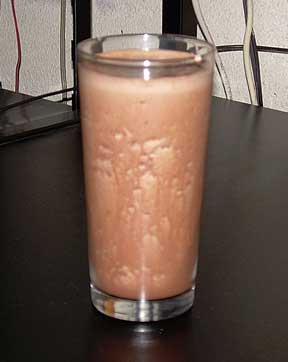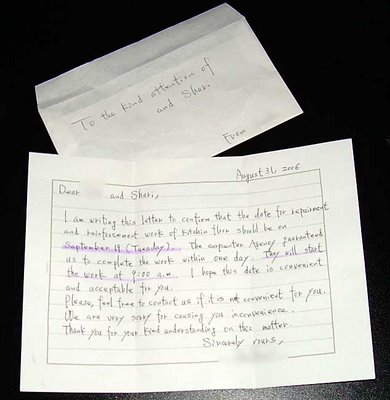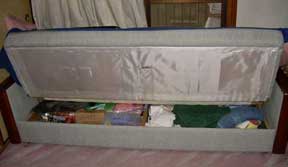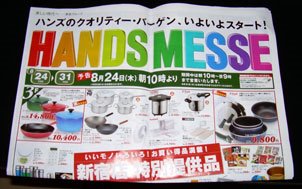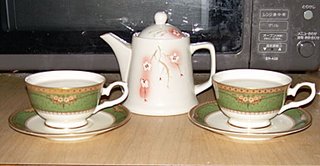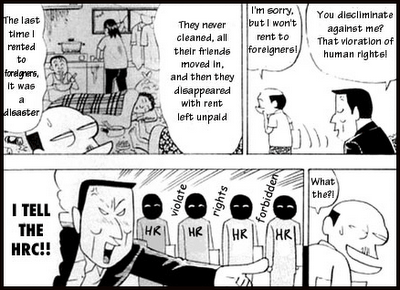 the full comic and original picture are at Coal's blog
the full comic and original picture are at Coal's blogThis morning I ran into my landlord and had a curious discussion. As I posted yesterday, there was concern that I was upset about the cleaning crew that was cleaning the screens and the apartment just above mine. Apparently, the cleaning crew felt that, because I was American, I was unhappy and taking pictures in preparation to take some sort of "legal action." When I reassured the landlord that I would never do such a thing, he said he was relieved.
This conversation was odd not because I think it's inconceivable that a foreign resident might overreact and do such a thing but that my landlord would think I would do such a thing. I've lived in the same apartment for 17 years now. My husband and I have not complained about anything except when about 10 years ago the tenant above us was throwing dirty cleaning water out on her balcony which dripped down onto our laundry hanging on our balcony. We have also never missed our rent payments and pay "gift" money upon every rent contract renewal without complaint. That means we fork over an extra month's rent every two years for the honor of being allowed to continue to pay our regular rent each month for the next two years.
There's a long history of us not getting uptight about things and being decent tenants. So, why, after all this time, would my taking a few pictures result in the absurd conclusion that I was preparing for a lawsuit? And what exactly could I possibly sue about? A little cleaning-related noise? My screens temporarily being removed for cleaning? The guys parking in the street in front of the landlord's house?
After some time passed, I started to wonder if some of the propaganda I read about on Coal's blog is taking root. The full article with translated cartoons is available here but the gist of it is that foreigner's rights, if protected, will result in the Japanese having to tolerate bad behavior. The cartoons essentially say that discrimination is necessary to protect the rights of business owners and landlords from foreign people who will be disruptive and destructive.
I'm not concluding for now that this propaganda directly caused the cleaning crew's suspicion (which then led to my landlord's worries) because there are other possibilities. For instance, exposure to news of some of the more outrageous cases of litigiousness in the U.S. could easily lead the Japanese to believe we're all just looking for any pocket we can legally find a means to pick. I am, however, disappointed that my landlord didn't know better after my husband's and my long and well-behaved tenancy. It points out the sad fact that no matter how we behave, we are, first and foremost viewed as "gaijin" and subject to all the preconceptions and misperceptions that go along with being a foreigner in Japan.
